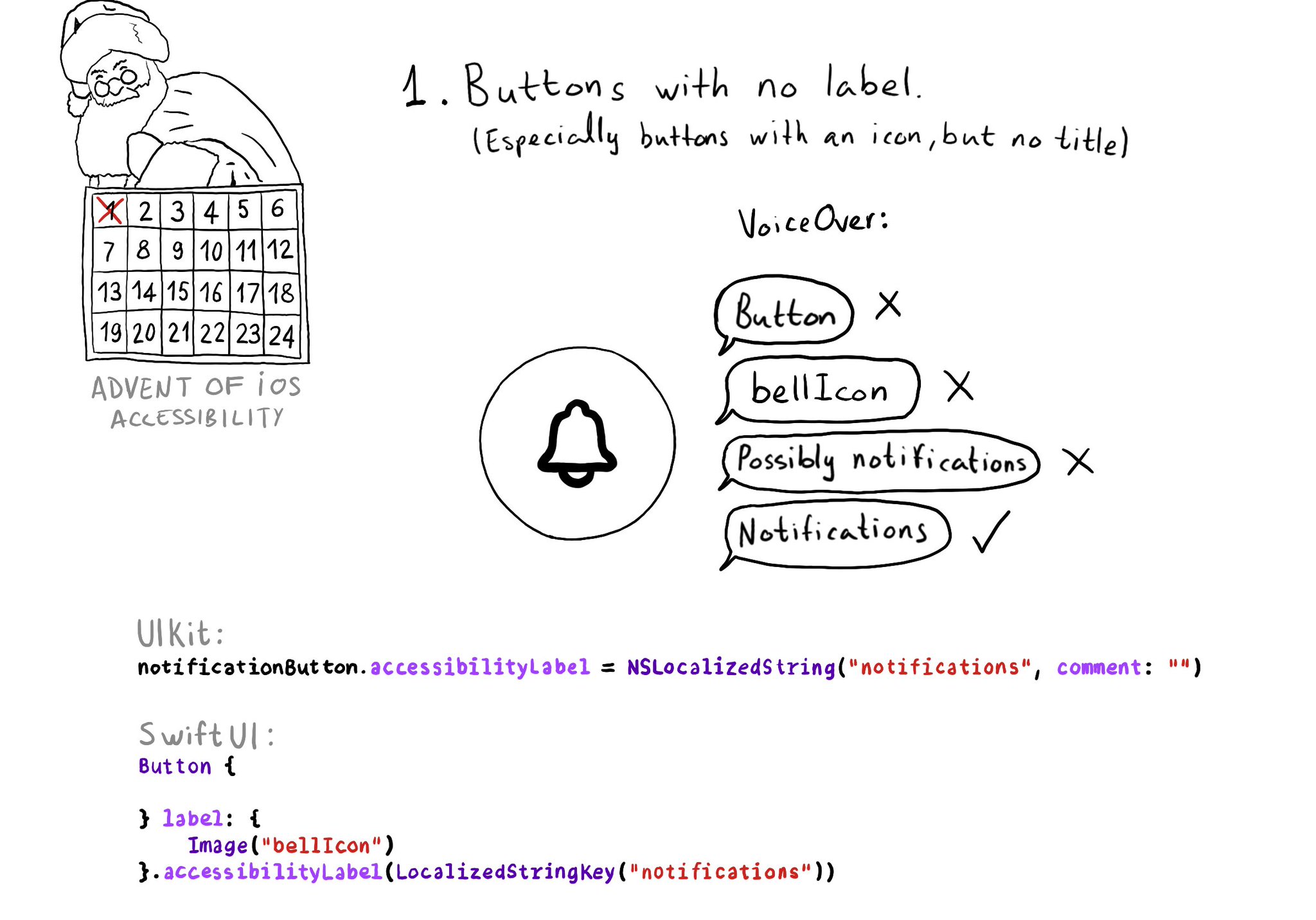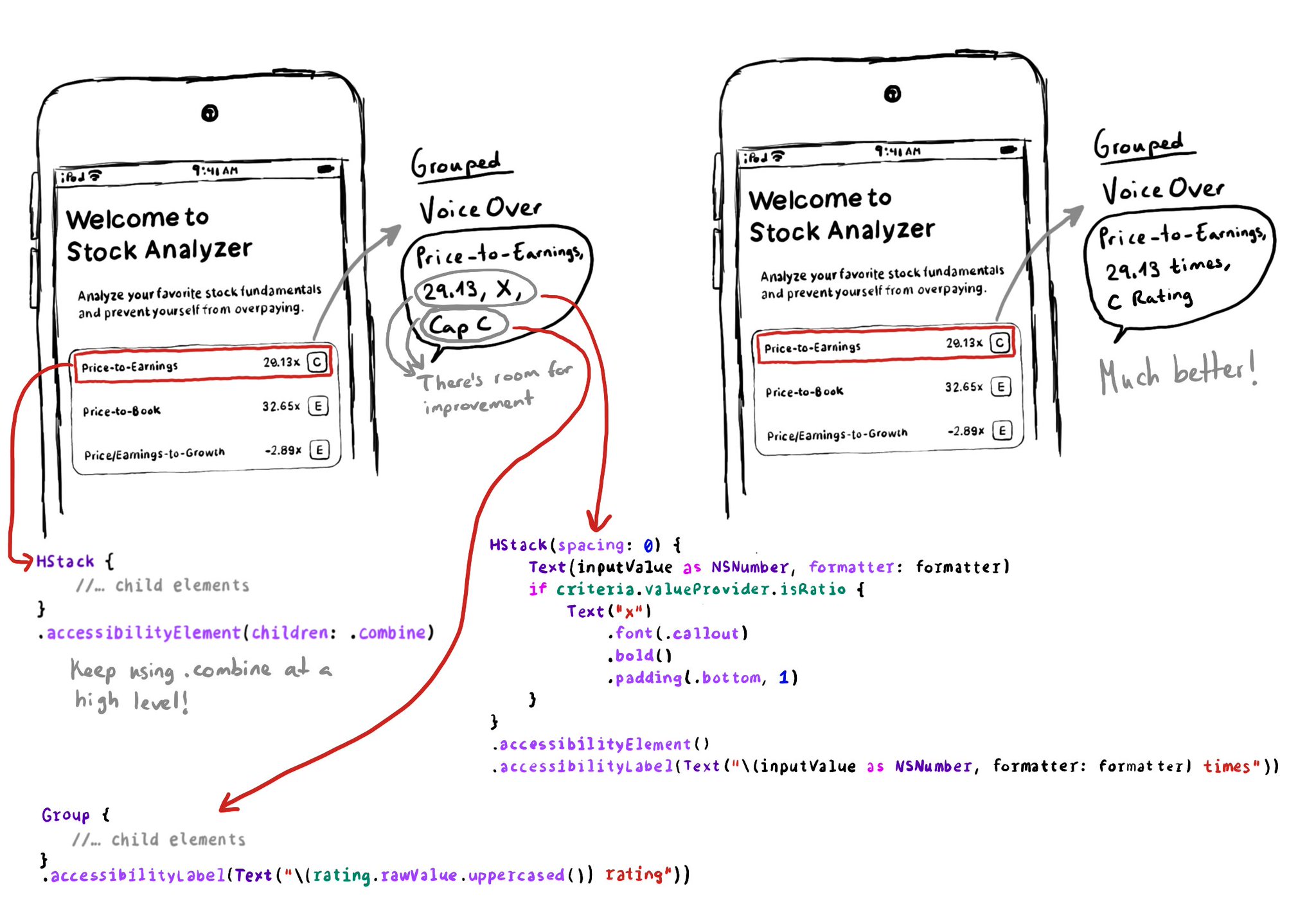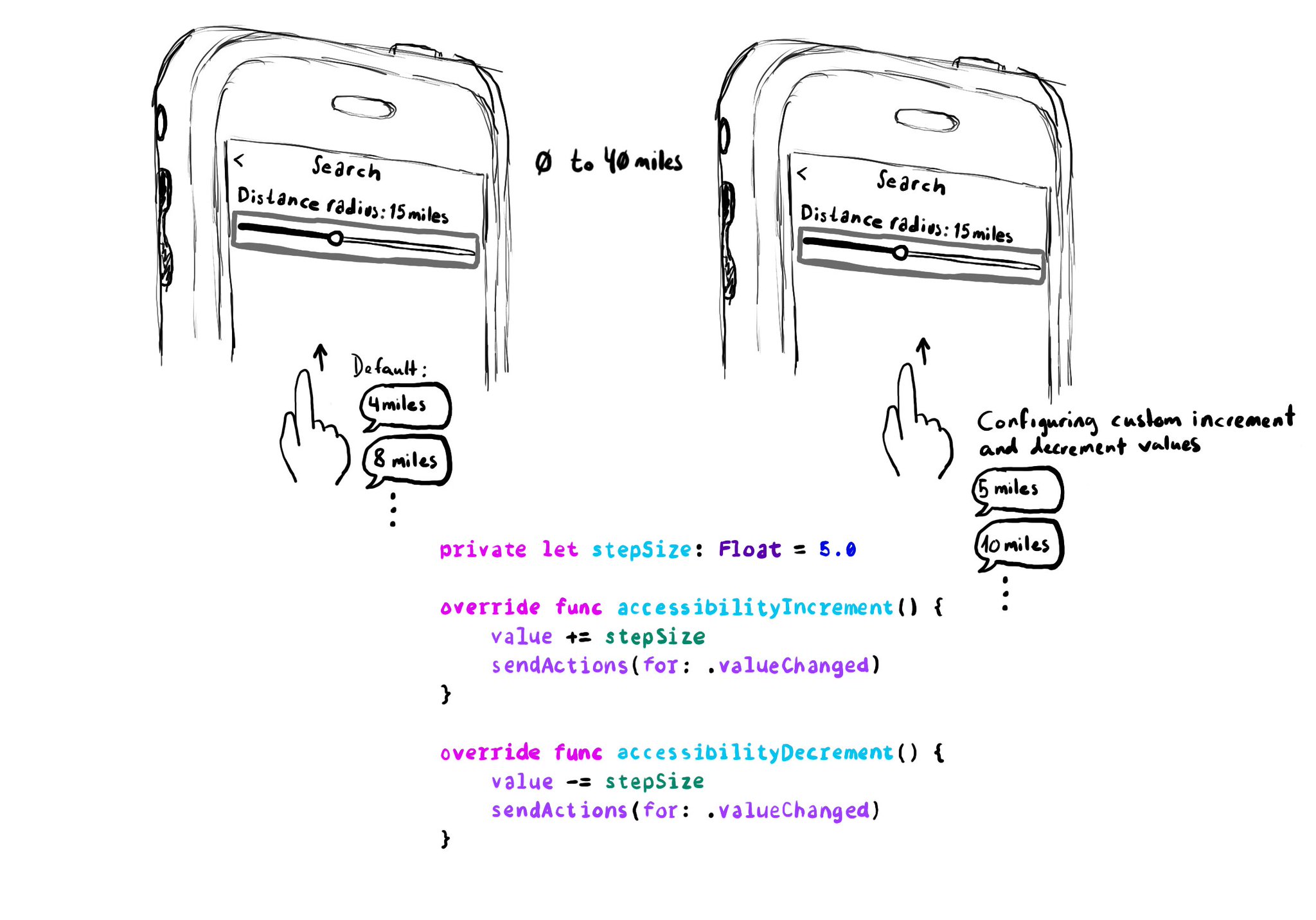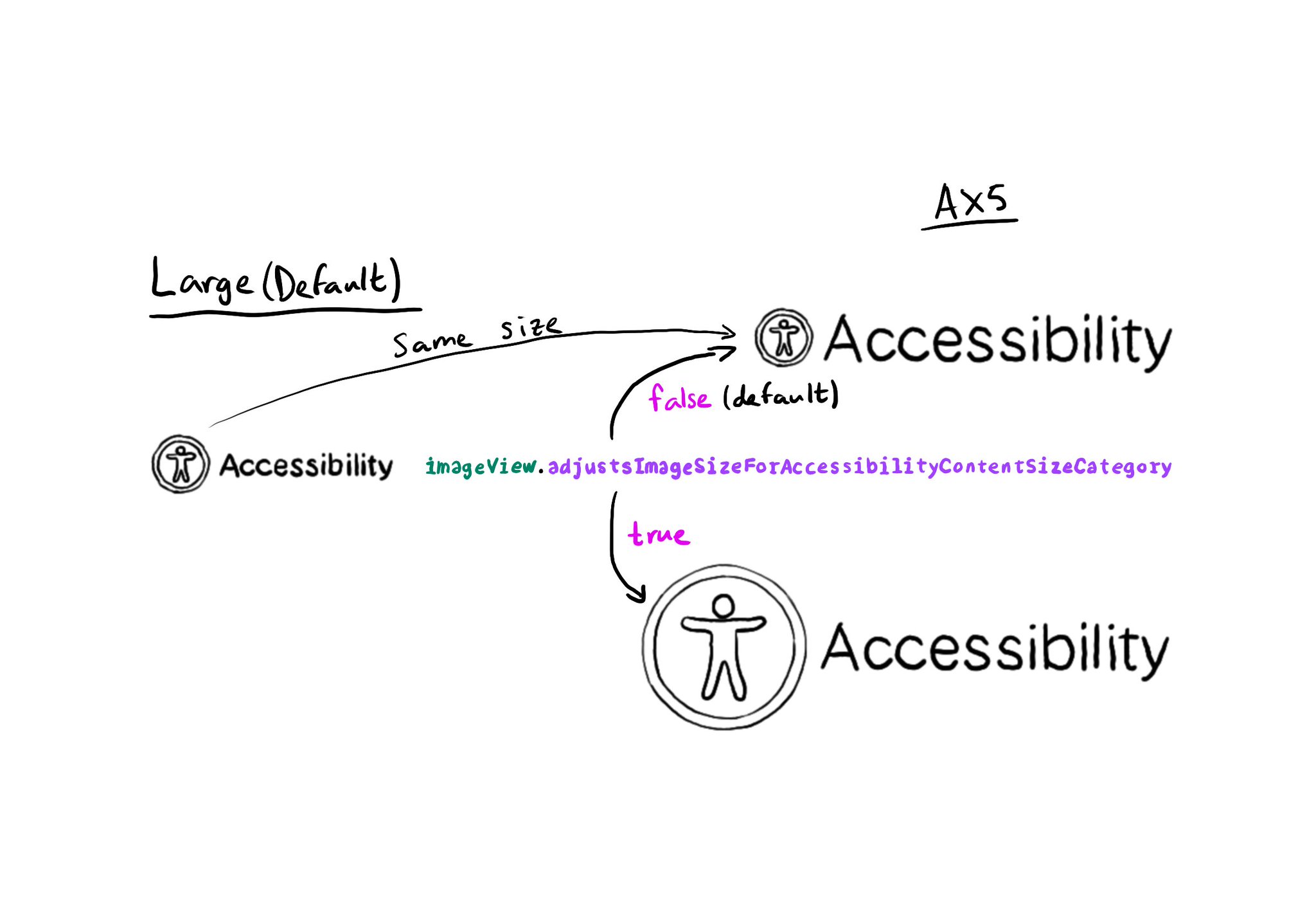One of the accessibility issues I see more often in iOS apps, believe it or not, is unlabelled elements. This happens especially for buttons with an icon but no title. In those cases, you need to configure an accessibility label manually.

You may also find interesting...

Grouping elements with .accessibility(children: .combine) doesn't always generate the best accessibility label. Comma-separating labels might sometimes not be ideal. But you can improve it by tweaking the labels/grouping of its children first.

When implementing a UISlider, it is a good idea to consider how much the slider value should change when swiping up/down to adjust it. It might not always make sense to do it in 10% increments, which is the default behaviour. Could be because the value at those intervals doesn't make sense, or feel random, or because it wouldn't provide the user with a fine enough control being able to go through the whole slider in just 10 swipes. It user will still be able to adjust the slider to any value by double tapping and holding and then moving the finger left or right, bypassing VoiceOver gestures. VoiceOver announces the new value as it changes.

Images can automatically scale for accessibility content size categories, by setting the adjustsImageSizeForAccessibilityContentSizeCategory property to true, for any UIImageView you'd like to get its size adjusted. https://developer.apple.com/documentation/uikit/uiaccessibilitycontentsizecategoryimageadjusting/adjustsimagesizeforaccessibilitycontentsizecategory